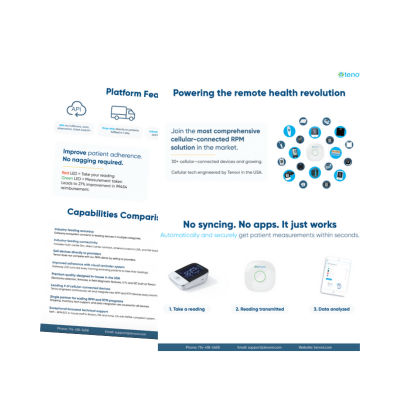Chronic conditions, such as hypertension, diabetes, and cardiovascular diseases, can lead to serious complications if left unmanaged. Chronic disease education is vital to help patients manage persistent conditions. From a cost perspective, chronic diseases in the United States contribute to approximately 90% of healthcare expenditures, and the aging population in America is growing at a faster rate than ever.
As healthcare systems evolve, the need for sustainable, patient-centered models has never been more urgent. Chronic care and remote patient monitoring programs are increasingly viewed as a pathway to empower patients with education, digital tools, and consistent care coordination.
This article explores effective chronic care solutions that focus on educating and empowering patients to manage chronic illnesses. We discuss a study published in the Journal of Clinical and Nursing Research that focuses on the effects of combining health education with chronic disease management to improve emotional well-being, disease understanding, and self-management skills in senior hypertensive patients.
Integrating Health Education with Chronic Disease Management
In the study, 64 senior patients diagnosed with hypertension in a community setting were divided into two groups. The control group received conventional treatment. The experimental group participated in a combined chronic disease education and management program. They attended health education sessions tailored to individual comprehension levels and received ongoing nursing support. Education covered medication adherence, dietary control, exercise, and lifestyle modifications such as quitting smoking and limiting alcohol intake. Nurses also conducted follow-ups, ensuring that patients’ emotional and physical needs were addressed in parallel.
Patients’ vital signs were recorded and uploaded monthly, enabling clinicians to track progress and make timely adjustments to care plans, an approach increasingly common in chronic care remote patient monitoring programs today.
Chronic Disease Education Research
The study’s results showed clear benefits for patients in the experimental group. The patients had significantly lower blood pressure levels than the control group. On average, their systolic blood pressure was reduced to 118 mmHg, compared to 133 mmHg in the control group. Their diastolic blood pressure was 80 mmHg, compared to 86 mmHg.
In addition to better blood pressure, patients in the experimental group experienced lower levels of anxiety and depression. Scores on the Self-Rating Anxiety Scale (SAS) and Self-Rating Depression Scale (SDS) showed that emotional distress was lower for these patients.
By combining chronic disease education with health management, these patients also learned the value of regular blood pressure checks. They improved their lifestyle choices, which led to better self-management and overall health.
Benefits of Chronic Disease Education
The study highlighted three main areas where chronic disease education benefited elderly hypertensive patients.
Enhanced Disease Cognition
The specialized approach empowered patients with essential knowledge about hypertension. This included understanding normal blood pressure ranges, the risks associated with high blood pressure, and lifestyle choices that could mitigate these risks. Patients in the experimental group scored significantly higher in disease cognition, demonstrating how targeted education helps elderly patients grasp the importance of proactive health management.
Improved Emotional Health
Specialized education and support were shown to alleviate symptoms of anxiety and depression. These symptoms are common in elderly individuals managing chronic illnesses. The experimental group reported lower levels of anxiety and depression compared to the control group. A better understanding and control over their health seems to have contributed to a more positive emotional outlook.
Better Self-Management Practices
Effective chronic disease education helped promote healthy behaviors such as quitting smoking, reducing alcohol consumption, adhering to medication schedules, and engaging in regular exercise. In the experimental group, patients demonstrated higher adherence to healthy practices and consistently monitored their blood pressure. These results demonstrate the role of education in fostering self-sufficiency and improved health outcomes.
The Value of Chronic Disease Education in Community Health Management
The study’s structured education and monthly health tracking mirror modern approaches in chronic care remote patient monitoring. Remote patient monitoring allows healthcare teams to capture vital data such as blood pressure or glucose levels in real time and intervene early when trends indicate risk. In community health programs, education can be scaled to reach vulnerable populations, helping prevent disease progression and lowering healthcare costs.
By empowering patients with knowledge, tools, and remote monitoring support, providers can build a care model that is both proactive and preventive. As the population continues to age, the integration of chronic care education and remote patient monitoring offers a path forward that combines technology, compassion, and long-term patient engagement to improve quality of life and reduce the burden of chronic disease on the healthcare system.
The study shows the value chronic disease education can have in managing hypertension among senior patients. This integrated approach enhanced disease cognition, emotional health, and self-management capabilities. With a deeper understanding of options for managing hypertension, patients are empowered to make informed decisions about their health, which may reduce complications and improve quality of life. This combined chronic disease education and management model offers a scalable solution for community-based healthcare, potentially reducing the burden on healthcare systems and promoting patient independence.


